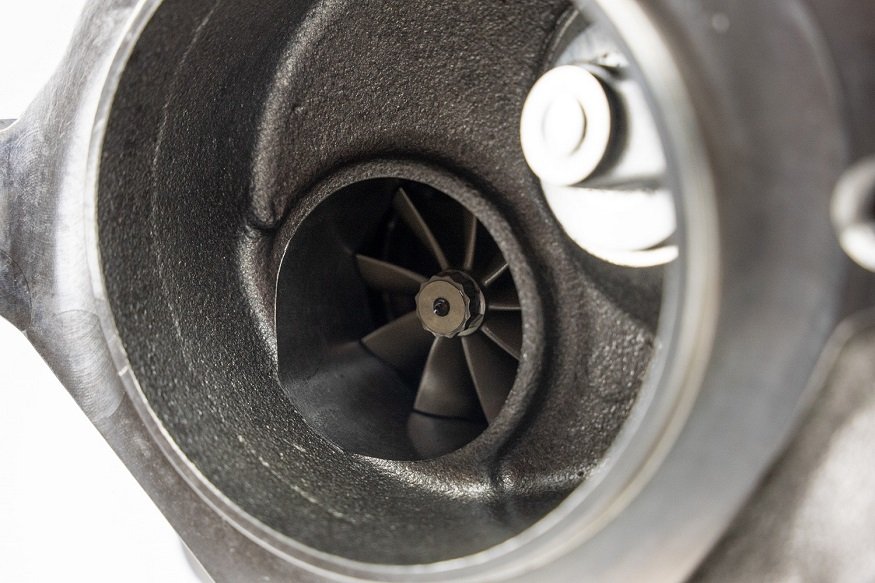27WON Civic Type R Turbocharger Upgrade (Design Blog Pt. 1)
You know the saying. Good things come to those who wait. And in this case, a lot of waiting makes for something really good. Say hello to Kuro!
Yes, 27WON is releasing a drop-in turbocharger upgrade for the Honda Civic Type R very soon. That’s right, the 10th generation FK8 is getting the 27WON touch in the boost department. This is something we have been working on for many years. This unit has taken nearly twice as long compared to the development of the L15 drop in unit. We learned much from our W1 and W2 development that allowed us to create what we are positive will be the most premium unit for the FK8 without carrying a premium price tag. Of course, like with all the products we design we fully understood the OEM unit, agreed on our design targets and moved forward. Those are highlighted below.
The OEM turbocharger found on the 2017-2021 Civic Type R is a TD04 unit designed and produced by MHI. That’s short for Mitsubishi Heavy Industry and yes, that is a Mitsubishi part inside your Honda. Fun fact – they make OEM turbos for a lot of other car brands.
This is a very proven journal-bearing turbo that has been around for years. Tried and true, easy and cheap to manufacture, and readily available. The compressor wheel is made of 17HFI cast aluminum and comes with a 49.3mm compressor wheel inducer and 58mm exducer. Nothing to gloat about but a unit capable of making high 300, low 400 numbers with relative ease with the right bolt ons. The compressor wheel was the first part of the turbocharger we touched to help drive performance for the 27WON Type R Turbo kit.
We ditched the OEM cast wheel and replaced it with an 8+0 point milled billet compressor wheel. I know that is a mouthful so let me break it down for you. A billet wheel is used in favor of a cast wheel because we can make it both lighter and stronger. Two things we want to spring the turbo up faster and make more power. The fixed 8-blade design was used due to the large volume in between each blade. This helps scoop up more air to get more air ingested into the engine. Bigger turbo means more air for more fuel and ultimately more power. The real kicker on the compressor wheel is the machining technology that we used.
There are traditionally 2 ways to machine a billet compressor wheel: Flank-Milled and Point-Milled. Flank-milled is a more low-cost and easier way to machine mostly because it can be completed faster. A flank-mill uses larger tools and tool paths so you can’t get as complicated in the design. We went with point-milled technology because this allows us to design a more complex wheel that will maximize the air around it for its given size. Look at the picture above. Do you see the complex curves of the wheel? This geometry is super important to moving lots of air. It's just another way we REDEFINE the Aftermarket
Swapping sides and looking at the turbine wheel, we did a lot of work here as well. The OEM turbine wheel has an 11-blade count with a 46.5mm inducer and 41.25mm exducer. For the 27WON FK8/FL5 turbo upgraded unit we dropped blade count down to 9 to help keep weight down while being able to harness more of the exhaust gas energy. Sizes were bumped up respectively to a 52mm inducer and 45.7mm exducer. Going bigger here without going too big was key. We wanted, of course, to make power but we did not want to create a lazy turbo with a bunch of lag. The OEM FK8 turbo is very responsive and sized well for the car. We wanted a OEM+ experience so as to not take the fun out of it.
Just like with the compressor wheel, we paid attention to the small details on the turbine wheel. A special back-cut on the wheel was used to reduce weight even further and webbing was used to add strength. Pair that with an all-new turbine housing with an optimized scroll and A/R sizing and you got yourself a unit capable of big gains over the stock turbo.
Lastly, at the heart of the unit, we replaced the Journal Bearing system in the center housing and rotating assembly (CHRA) with a full ceramic Ball Bearing system. The change to a ball bearing CHRA improves reliability and durability dramatically. You want this when you are pushing these cars both on and off the track.
We pulled out all the stops for this new high-performance turbocharger upgrade for the Honda Civic Type R and can’t wait to release the system this spring. Stay tuned for design blog Part 2 where we dive into the horsepower and torque figures.
Thanks for tuning in, till next time..
REDEFINE the Aftermarket
-Vincent






